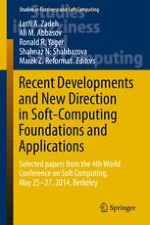This book reports on advanced theories and cutting-edge applications in the field of soft computing. The individual chapters, written by leading researchers, are based on contributions presented during the 4th World Conference on Soft Computing, held May 25-27, 2014, in Berkeley. The book covers a wealth of key topics in soft computing, focusing on both fundamental aspects and applications. The former include fuzzy mathematics, type-2 fuzzy sets, evolutionary-based optimization, aggregation and neural networks, while the latter include soft computing in data analysis, image processing, decision-making, classification, series prediction, economics, control, and modeling. By providing readers with a timely, authoritative view on the field, and by discussing thought-provoking developments and challenges, the book will foster new research directions in the diverse areas of soft computing.
